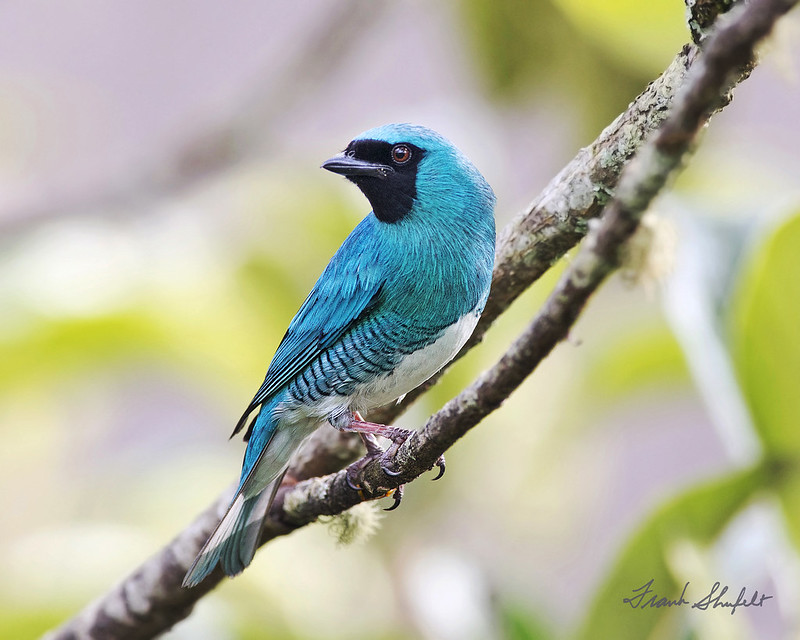
Tersina is a group of colorful tanagers that consist of only one species, known as the swallow tanager (Tersina viridis). This bird can be observed in various regions of South America, ranging from eastern Panama to the northernmost parts of Argentina.

The bird measures around 14 to 15 centimeters and exhibits significant sexual dimorphism. The male has a vibrant blue feather covering with a black mask and throat, complemented by a white belly and chrysum. On the other hand, the female displays a bright green hue on its back and yellowish-green shade underneath with striped flanks.
Johann Karl Wilhelm Illiger, a German zoologist, initially discovered the species T. viridis in 1811 and named it Hirundo viridis. The type locality is believed to be the Sandwich Islands, although it was later corrected to eastern Brazil. In 1819, the French naturalist Louis Jean Pierre Vieillot proposed the genus name Tersina, using Tersina coerulea as the type species, which is now considered a synonym for T. viridis. The name Tersina comes from the French word “tersine” used by Buffon to describe an unknown bird, while the term “viridis” originates from Latin, meaning green, referring to the female’s color.

The latest phylogenetic studies have provided evidence that the current species is closely related to Cyanerpes and belongs to the Dacninae subfamily. There are three recognized subspecies of Tersina viridis according to the classifications of the International Ornithological Congress (IOC) and Clements Checklist / eBird v.2019, each with its corresponding geographic distribution. Tersina viridis occidentalis (P.L. Sclater), 1855 is found from east of Panama to Venezuela, the Guianas, north of Bolivia, and north of Brazil. Tersina viridis griscens Griscom, 1929 can be found in Sierra Nevada de Santa Marta, northeast Colombia. Tersina viridis viridis (Illiger), 1811, on the other hand, is distributed from eastern Bolivia to Paraguay, eastern Brazil, and northeastern Argentina. Finally, regarding the habitat and distribution, further research needs to be conducted.

The species in question can be found in various regions of South America such as Colombia, Venezuela, Guyana, Suriname, French Guiana, Brazil, Ecuador, Peru, Bolivia, Paraguay, and Argentina. It tends to inhabit semi-open areas along the borders of humid forests, clearings with sparse trees, and gallery forests, typically up to an altitude of 1800 meters. This species is known for being nomadic, and can be found in large numbers during certain seasons or in specific locations.

This bird sustains itself by feeding on both fruits and insects, which it skillfully catches mid-flight. Its uniquely shaped beak and head allow it to gather a variety of fruits, storing them away in secretive spots. Along with consuming berries, avocados, termites, grasshoppers, and ants, among other things, it also reproduces by means of the female digging a burrow in which she lays two to four eggs. She then incubates them for roughly two weeks, after which the chicks are solely fed by the female before leaving the nest approximately 24 days later. Meanwhile, the male’s responsibility lies only in protecting the nest. This species is also known to produce distinct vocalizations.
The Tersina viridis has a distinct call that is sharp and non-musical, sounding like “tziip”. This call is often heard during fights. Sources include the BirdLife International and various historical texts such as Nouveau Dictionnaire d’Histoire naturelle by Vieillot and Prodromus systematis mammalium et avium by Illiger. The Tersina viridis is also listed in the Richmond Index of species and subspecies under the Procnias ventralis division of Birds at the National Museum of Natural History in Washington, D.C.

